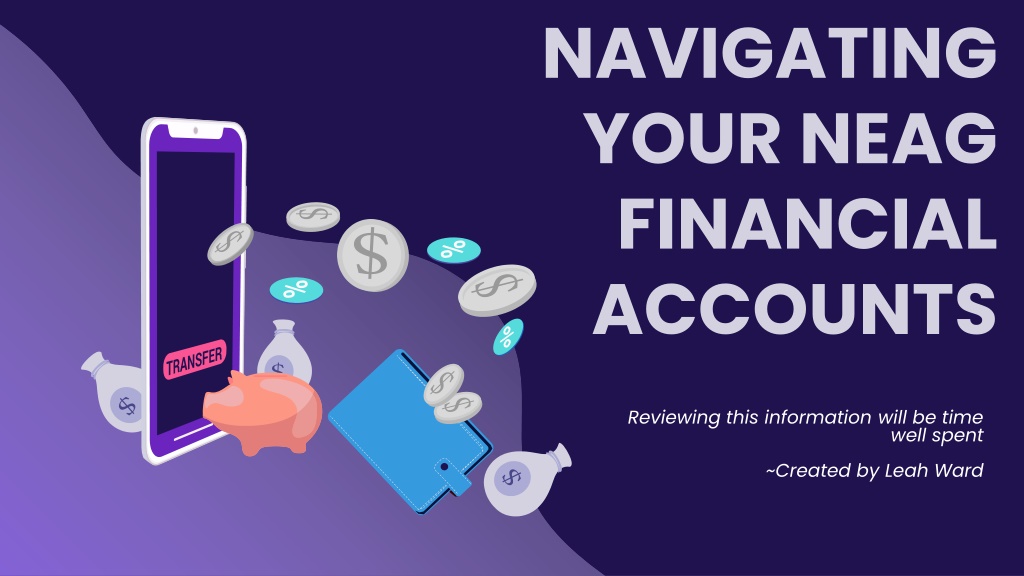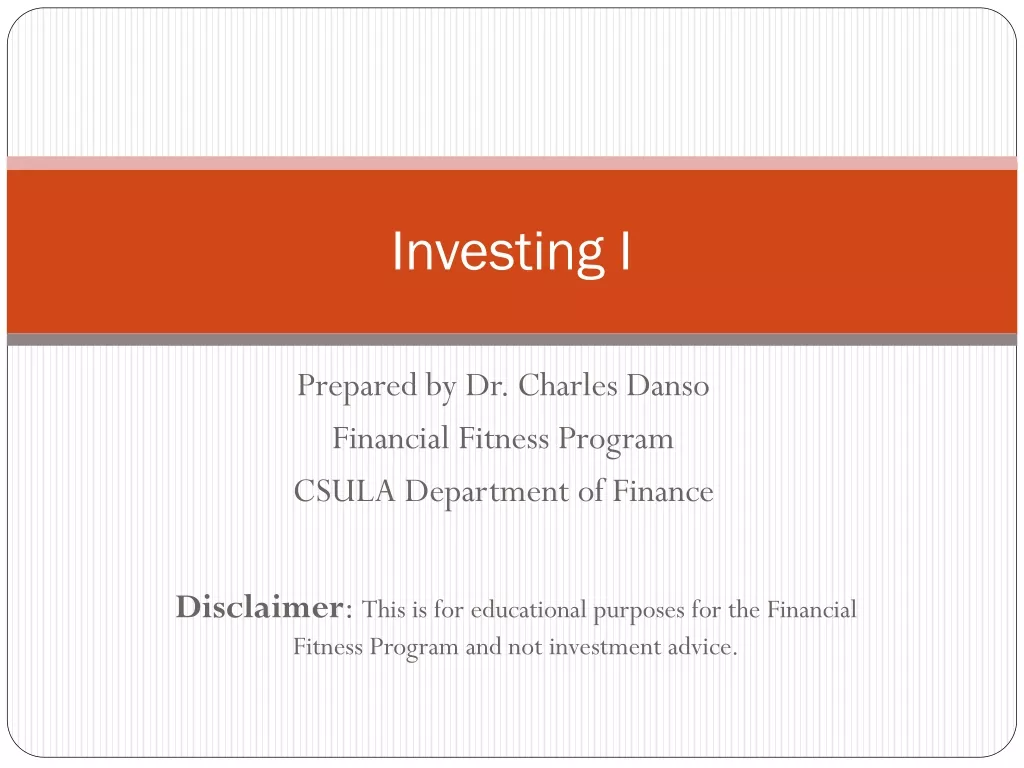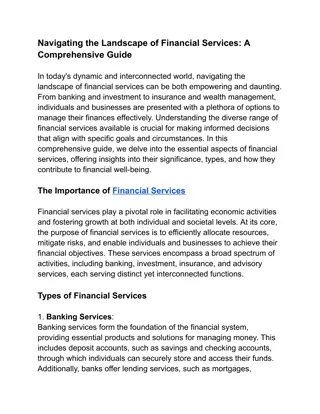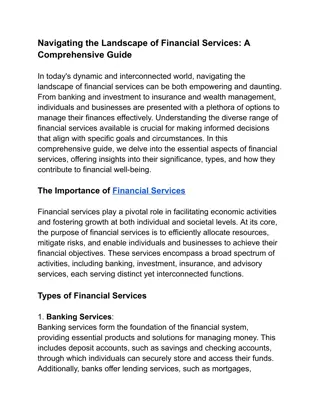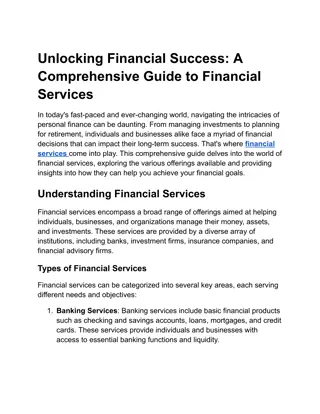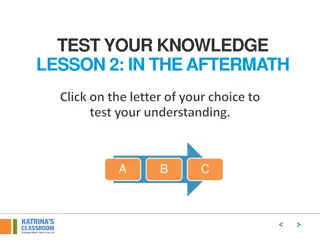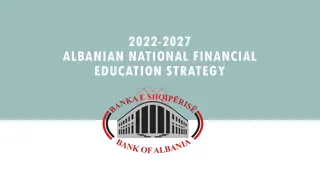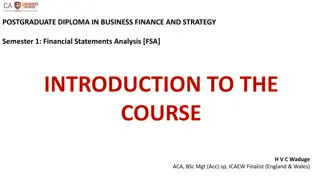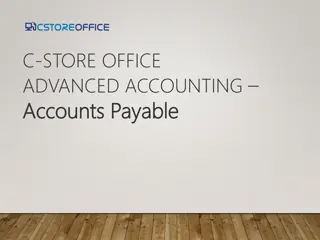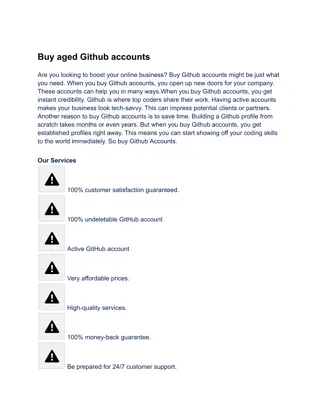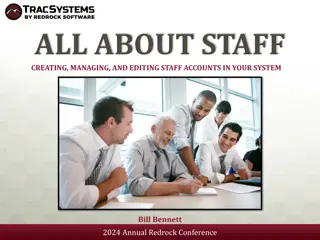Navigating Your NEAG Financial Accounts
Review and understand the various financial accounts within NEAG, including startup funds, grants, PI allotments, fixed prices, and allowable/prohibited expenditures. Explore terminology and account details for effective financial management.
Download Presentation

Please find below an Image/Link to download the presentation.
The content on the website is provided AS IS for your information and personal use only. It may not be sold, licensed, or shared on other websites without obtaining consent from the author.If you encounter any issues during the download, it is possible that the publisher has removed the file from their server.
You are allowed to download the files provided on this website for personal or commercial use, subject to the condition that they are used lawfully. All files are the property of their respective owners.
The content on the website is provided AS IS for your information and personal use only. It may not be sold, licensed, or shared on other websites without obtaining consent from the author.
E N D
Presentation Transcript
NAVIGATING YOUR NEAG FINANCIAL ACCOUNTS Reviewing this information will be time well spent ~Created by Leah Ward
Agenda Account Overview Lions and tigers and bears, oh my! -Wizard of OZ Terminology ASAP - ICYMI - BRB but not Neag 01 02 Reports Did you see the memo about the TPS report? - Office Space Tips for Success In epidemiology, the tipping point is that moment when a small change tips the balance of a system and brings about a large change 03 04
01 ACCOUNT OVERVIEW
Varying Accounts Start Up Funds Funds* provided by the Dean and/or Dept to support new tenured or tenure track faculty Fixed Price Residuals Grants Residual funds after a grant is closed that does not have to be returned to the sponsor. Can be used to support ongoing research Funds provided by a sponsor for a specific research purpose Summer Revenues PI Allotments Salary Savings Also known as Indirect Cost Return (IDC) accounts. PI s and Depts each received 10% return on indirect costs earned on sponsored research grants If a faculty member earns over their 12/12ths, funds will be transferred here for use Portion of funds that a department receives for PI s who have part of their salary charged to a grant **Form is required to be filled out *In some cases, the additional funds may be awarded by the provost which may be in a separate account.
Additional Accounts Department Foundation Any non-faculty 2L account. Must receive approval to charge expenses other than pre-approved salary to these accounts In some cases, Departments and individuals have access to accounts maintained by the UConn Foundation. Expenses are charged to a 6L foundation account and reimbursed throughout the year from the foundation fund
Allowable & Prohibited Expenditures Salary Savings Fixed Price Summer Revenue Start Up DRIA Grants PI Allot. Travel/Conference Memberships guidelines/sponsor approval guidelines/sponsor approval Should be research related Should be research related Student Labor or Graduate Assistantships Purchasing (Supplies, Transcriptions, Technology) Food/Meals (IMPORTANT TO NOTE- preapproval by next level supervisor required) Contingent upon grant Contingent upon grant Faculty Summer Pay
02 TERMINOLOGY
Business & Grant Management Center, Neags account management team BGC Cost Transfer Moving an expense on a grant to another account, <30 days Deficit When there isn t enough money in the account; a negative balance Encumbered Funds Funds that have hit the account; a place-holder Fiscal Year The financial year which runs from July 1 - June 30 Additional costs beyond salary that relate to payroll and support benefits Fringe General Error Correction or General Ledger Transfer - Moving an expense on a grant to another account, <30 days GEC or GLT InfoEd The University s system for tracking grants
KFS Kuali Financial System OVPR The Office of the Vice President for Research Shifting funds between line items on a grant award and requires sponsor approval; completed by Fiscal Officer Rebudget Revenue Money added to an account RFD Request for Disbursement, ways to use Foundation money SPAR Special Payroll Authorization Request, hiring someone for <6 mos. SPS Sponsored Program Services (the grant department on campus) Funds that were posted to the account, but did not get expended in the end; they will be removed from the account Unencumbered Funds
03 TIPS FOR SUCCESS
Tips 2-Ledger Accounts: There is a 2.5% carryover limit on the 2L accounts and anything over that the University does not return to the account Account # s: Learn each of your account numbers, they are listed on the bi-weekly reports Moving Money: GEC/GLT and Cost Transfers should be only be used in error; not as a method to move money around Reports: Review your reports often and pay attention to the transactions; Confirm what is there - What isn t there? Requests: Ask questions before committing to anything;
Resources ACCOUNT MANAGEMENT PROCESSING SUPPORT Accounting Budgets Compliance Records Reporting Payroll Purchasing Questions should be Your first point of contact Then we ll work with EDLR Admin BSC Liz Alyssa, Kim & Leah
04 FINANCIAL REPORTS
Reading Reports Receiving Reports Monitoring Requesting Help Expenses You should be receiving these every 2 weeks Review our tips and terminology to help with this It s important to keep an eye on the transaction report and verify charges If you re still unclear on your report, contact Liz Moussette by email They include ALL of your accounts Read through each one
Q&A with Liz Moussette (recorded session)
Question: How do I see how much is in my account?
Answer: Everyone that has an account should be getting a report and on that first page you should see a balance. If you have any questions, you can always reach out to your Fiscal Officer and they can look that up for you.
Question: How do I know what account number is which?
Answer: You should have a list of all your accounts - on the report each will be listed by account # and name.
Question: Where can I find all my account numbers?
Answer: This is available on the bi- weekly reports. If you have accounts, you should be getting the reports. If you are not, please let your fiscal officer know.
Question: I know I have money, but HOW do I spend it?
Answer: Work with the Department Admin to make purchases. Out of pocket reimbursements go through Concur and trainings are available for Faculty.
Question: Are there limitations on what I can buy?
Answer: Some limitations but not many. If research approved, purchases should be research related. Use up 2-ledger salary savings funds first.
Allowable & Prohibited Expenditures Salary Savings Fixed Price Summer Revenue Start Up DRIA Grants PI Allot. Travel/Conference Memberships guidelines/sponsor approval guidelines/sponsor approval Should be research related Should be research related Student Labor or Graduate Assistantships Purchasing (Supplies, Transcriptions, Technology) Contingent upon grant Contingent upon grant Food/Meals Faculty Summer Pay
Question: Why isn t my money all in one place?
Answer: Some fund transfers on campus require accounts with the same attributes which is why Faculty may have more than one account to manage. It s not ideal, but mandated by the University and/or funder.
Question: What does it mean when I see an encumbrance on my account? What happens if I don t use the full encumbered amount?
Answer: Encumbered expenses cover costs already committed and associated with Payroll or a Purchase Order. Encumberances get reduced as they are paid/invoiced.
